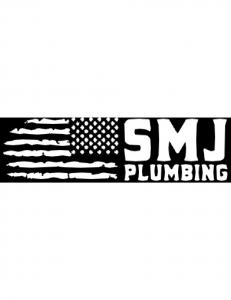
Understanding Why Dishwashers Back Up Into Sinks: Common Causes and Plumbing Solutions
Stephen Jordan, owner of SMJ Plumbing in Slidell, Louisiana explains that dishwasher backups are most commonly connected to the shared drainage system between the sink and the dishwasher unit.
“Dishwashers and sinks often connect to the same drain line,” said Jordan. “When that line becomes obstructed or improperly vented, wastewater can flow back into the sink instead of draining away as intended.”
Shared Drain Lines and How They Function
In most kitchen setups, the dishwasher discharges wastewater through a drain hose connected to the garbage disposal or sink drain. This hose typically routes into the same drainage system as the sink. When everything is working correctly, gravity and venting allow water to flow smoothly away from the fixtures.
Problems arise when something blocks or slows the flow of water through the drainpipe. The backup pressure then forces the water to exit through the path of least resistance—often the kitchen sink basin.
Common Causes of Dishwasher-Sink Backups
Several underlying issues can cause this kind of drainage failure:
Clogged Drain Line – Food particles, grease, and debris can accumulate in the kitchen drain line over time, leading to a partial or full blockage. When the dishwasher tries to drain, the water has nowhere to go and instead pushes upward into the sink.
Garbage Disposal Blockage – In kitchens where the dishwasher connects through the garbage disposal, any clog in the disposal unit can obstruct the flow of wastewater from the dishwasher. If the disposal hasn’t been cleaned or used properly, it may become a chokepoint for drainage.
Improper Drain Hose Installation – The dishwasher drain hose must be installed with a high loop or connected to an air gap, depending on local plumbing code. This prevents backflow and helps wastewater flow in the correct direction. If the hose sags or dips below the water line, gravity may cause dirty water to reverse course into the sink.
Blocked Air Vent or Improper Venting – Plumbing systems rely on air vents to regulate pressure and support proper drainage. A blocked or improperly installed vent can disrupt the balance, causing water to gurgle back up into nearby fixtures.
Sewer Line Obstruction – In more severe cases, the issue can stem from a blockage in the main sewer line. This causes wastewater from multiple fixtures—including the dishwasher—to back up into the lowest point in the system, often the kitchen sink.
Preventive Measures and Best Practices
Routine maintenance and proper installation are essential in preventing backups between dishwashers and sinks. Drain cleaning, either manually or professionally, helps keep the lines clear of grease and debris. Avoiding the disposal of fibrous food waste, coffee grounds, and excessive grease can also extend the life of kitchen drain lines.
In addition, ensuring that the dishwasher’s drain hose has a high loop above the sink drain line—or installing an air gap, as required in many areas—helps prevent backflow during drainage. Inspections of the garbage disposal unit and confirmation of vent functionality are also standard preventive measures.
When the Problem Persists
If the dishwasher continues to back up into the sink despite basic cleaning and inspection, the underlying issue may require professional diagnosis. Plumbers often use drain cameras and pressure tests to determine whether the problem lies within the sink line, dishwasher connection, or deeper within the property’s drainage system.
Stephen Jordan notes that unresolved backups can lead to more extensive water damage and increased wear on dishwasher components. Addressing the issue early prevents long-term complications, including leaks, corrosion, and system failure.
A Common Issue with Straightforward Solutions
While dishwasher-sink backups may appear alarming, the issue often stems from correctable conditions. Whether it’s a minor clog, an installation oversight, or a venting imbalance, resolution typically involves identifying the source and restoring proper flow within the drainage system.
In New Orleans and similar older residential areas, aging pipes and outdated plumbing layouts can contribute to more frequent drainage challenges. Proper maintenance, updated connections, and adherence to code recommendations can make a significant difference in preventing recurring backups.
Morgan Thomas
Rhino Digital, LLC
+1 504-875-5036
email us here
Visit us on social media:
Facebook
Distribution channels: Building & Construction Industry, Culture, Society & Lifestyle, Real Estate & Property Management
Legal Disclaimer:
EIN Presswire provides this news content "as is" without warranty of any kind. We do not accept any responsibility or liability for the accuracy, content, images, videos, licenses, completeness, legality, or reliability of the information contained in this article. If you have any complaints or copyright issues related to this article, kindly contact the author above.
Submit your press release

